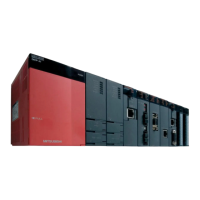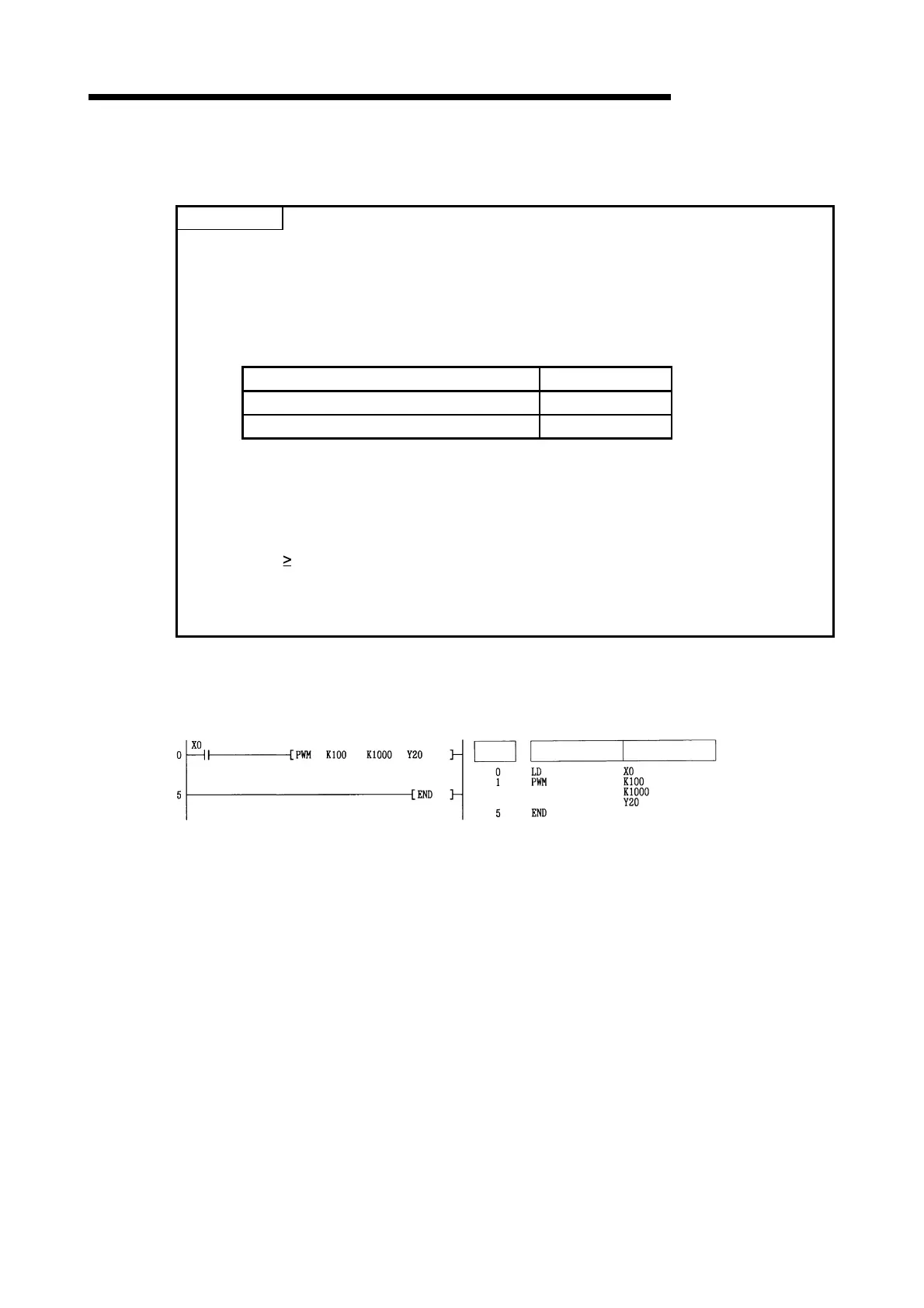6 - 131 6 - 131
MELSEC-Q/QnA
6 BASIC INSTRUCTIONS
[Operation Errors]
(1) There are no operation errors associated with the PWM instruction.
POINT
(1) The PWM instruction registers the designated device data to the work area of the CPU
module.
The actual output operation is processed as the interruption by the CPU module.
(The device data registered to the work area of the CPU module is cleared when the
command input is turned OFF or when the CPU module is STOPped and then RUN.)
The interrupt time of individual CPU module is shown below:
CPU module Type Name Interrupt Time
High Performance model QCPU, Process CPU 1ms
QnACPU 5ms
For this reason, the PWM instruction can be used only once within all the programs being
executed by the CPU module.
(2) The instruction is not processed in the following cases:
• When both n1 and n2 are 0
• When n1 and n2 are not multiples of 5 (only when QnACPU is used)
• When n2
n1
(3) Do not change the arguments of the PWM instruction while pulses are being output by the
PWM instruction (while the command input is ON).
Before changing the arguments, turn OFF the command input.
[Program Example]
(1) The following program outputs a 100 ms pulse once each second to Y20 when X0 is ON.
[Ladder Mode] [List Mode]
Steps
Instruction
Device
Artisan Technology Group - Quality Instrumentation ... Guaranteed | (888) 88-SOURCE | www.artisantg.com

